 W
WThe extraction of petroleum is the process by which usable petroleum is drawn out from beneath the earth's surface location.
 W
WAn accommodation platform is an offshore platform which supports living quarters for offshore personnel. These are often associated with the petroleum industry, although other industries use them as well, such as the wind farm Horns Rev 2.
 W
WAfrican Petroleum Producers Organization (APPO) is an organization of African countries producing petroleum. It was created on January 27, 1987 in Lagos, Nigeria, to serve as a platform for cooperation and harmonization of efforts, collaboration, sharing of knowledge and skills among African oil producing countries. The headquarters of the organization is in Brazzaville in the Congo. The Organization changed its name from African Petroleum Producers Association to African Petroleum Producers Organization in 2017.
 W
WAsphaltenes are molecular substances that are found in crude oil, along with resins, aromatic hydrocarbons, and saturates. The word "asphaltene" was coined by Boussingault in 1837 when he noticed that the distillation residue of some bitumens had asphalt-like properties. Asphaltenes in the form of asphalt or bitumen products from oil refineries are used as paving materials on roads, shingles for roofs, and waterproof coatings on building foundations.
 W
WA blowout preventer (BOP) is a specialized valve or similar mechanical device, used to seal, control and monitor oil and gas wells to prevent blowouts, the uncontrolled release of crude oil or natural gas from a well. They are usually installed in stacks of other valves.
 W
WA boilover type of fire refers to an extremely hazardous situation where an attempt is made to extinguish semi-enclosed oil or petrochemical fueled fire with water. The hazard results due to the difference in density between oil and water.
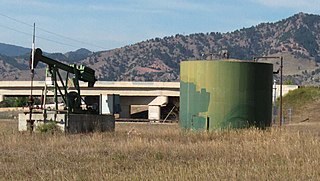 W
WThe Boulder Oil Field was an oil field, in the area of Boulder, Colorado.
 W
WIn petroleum and natural gas extraction, a Christmas tree, or "tree", is an assembly of valves, casing spools, and fittings used to regulate the flow of pipes in an oil well, gas well, water injection well, water disposal well, gas injection well, condensate well and other types of wells.
 W
WIn the oil and gas industries, coiled tubing refers to a very long metal pipe, normally 1 to 3.25 in in diameter which is supplied spooled on a large reel. It is used for interventions in oil and gas wells and sometimes as production tubing in depleted gas wells. Coiled tubing is often used to carry out operations similar to wirelining. The main benefits over wireline are the ability to pump chemicals through the coil and the ability to push it into the hole rather than relying on gravity. Pumping can be fairly self-contained, almost a closed system, since the tube is continuous instead of jointed pipe. For offshore operations, the 'footprint' for a coiled tubing operation is generally larger than a wireline spread, which can limit the number of installations where coiled tubing can be performed and make the operation more costly. A coiled tubing operation is normally performed through the drilling derrick on the oil platform, which is used to support the surface equipment, although on platforms with no drilling facilities a self-supporting tower can be used instead. For coiled tubing operations on sub-sea wells a mobile offshore drilling unit (MODU) e.g. semi-submersible, drillship etc. has to be utilized to support all the surface equipment and personnel, whereas wireline can be carried out from a smaller and cheaper intervention vessel. Onshore, they can be run using smaller service rigs, and for light operations a mobile self-contained coiled tubing rig can be used.
 W
WCoiled tubing umbilicals are a type of piping used in oil and gas wells.
 W
WColony Shale Oil Project was an oil shale development project at the Piceance Basin near Parachute Creek, Colorado. The project consisted of an oil shale mine and pilot-scale shale oil plant, which used the TOSCO II retorting technology, developed by Tosco Corporation. Over time the project was developed by a consortium of different companies until it was terminated by Exxon on 2 May 1982 a day which is known amongst locals as "Black Sunday".
 W
WWell completion is the process of making a well ready for production after drilling operations. This principally involves preparing the bottom of the hole to the required specifications, running in the production tubing and its associated down hole tools as well as perforating and stimulating as required. Sometimes, the process of running in and cementing the casing is also included. After a well has been drilled, should the drilling fluids be removed, the well would eventually close in upon itself. Casing ensures that this will not happen while also protecting the wellstream from outside incumbents, like water or sand.
 W
WIn geometry, a corner-point grid is a tessellation of a Euclidean 3D volume where the base cell has 6 faces (hexahedron).
 W
WSteam injection is an increasingly common method of extracting heavy crude oil. It is considered an enhanced oil recovery (EOR) method and is the main type of thermal stimulation of oil reservoirs. There are several different forms of the technology, with the two main ones being Cyclic Steam Stimulation and Steam Flooding. Both are most commonly applied to oil reservoirs, which are relatively shallow and which contain crude oils which are very viscous at the temperature of the native underground formation. Steam injection is widely used in the San Joaquin Valley of California (US), the Lake Maracaibo area of Venezuela, and the oil sands of northern Alberta (Canada).
 W
WA delayed coker is a type of coker whose process consists of heating a residual oil feed to its thermal cracking temperature in a furnace with multiple parallel passes. This cracks the heavy, long chain hydrocarbon molecules of the residual oil into coker gas oil and petroleum coke.
 W
WA derrickhand or derrickman is the person who sits atop the derrick on a drilling rig. Though the exact duties vary from rig to rig, they almost always report directly to the driller. Their job is to guide the stands of the drill pipe into the fingers at the top of the derrick. Other duties might include monitoring pH and calcium levels, viscosity and the mud weight (density), adding chemicals and oil based fluids, and being responsible for the shale shakers and mud pump.
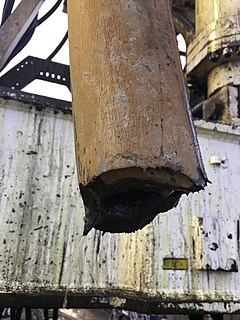 W
WA drill string on a drilling rig is a column, or string, of drill pipe that transmits drilling fluid and torque to the drill bit. The term is loosely applied to the assembled collection of the smuggler pool, drill collars, tools and drill bit. The drill string is hollow so that drilling fluid can be pumped down through it and circulated back up the annulus.
 W
WThe Driller is a team leader in charge during the process of well drilling. The term is commonly used in the context of an oil well drilling rig. Driller comes after the Toolpusher in the Rig crew hierarchy. Toolpusher takes the operation orders from the Company-man. Toolpusher then supervises these order to the driller and the rest of the drilling crew and gets the job done. While Toolpusher, driller and the drilling crew generally belong to the Drilling contractor company, Company-man is the employee of the operator company.
 W
WA drilling riser is a conduit that provides a temporary extension of a subsea oil well to a surface drilling facility. Drilling risers are categorised into two types: marine drilling risers used with subsea blowout preventer (BOP) and generally used by floating drilling vessels; and tie-back drilling risers used with a surface BOP and generally deployed from fixed platforms or very stable floating platforms like a spar or tension leg platform (TLP).
 W
WAn external floating roof tank is a storage tank commonly used to store large quantities of petroleum products such as crude oil or condensate. It consists of an open- topped cylindrical steel shell equipped with a roof that floats on the surface of the stored liquid. The roof rises and falls with the liquid level in the tank. As opposed to a fixed roof tank there is no vapor space (ullage) in the floating roof tank. In principle, this eliminates tank breathing loss and greatly reduces the evaporative loss of the stored liquid. There is a rim seal system between the tank shell and roof to reduce rim evaporation.
 W
WA fixed platform is a type of offshore platform used for the extraction of petroleum or gas. These platforms are built on concrete and/or steel legs anchored directly onto the seabed, supporting a deck with space for drilling rigs, production facilities and crew quarters. Such platforms are, by virtue of their immobility, designed for very long-term use. Various types of structure are used, steel jacket, concrete caisson, floating steel and even floating concrete. Steel jackets are vertical sections made of tubular steel members, and are usually piled into the seabed. Concrete caisson structures, pioneered by the Condeep concept, often have in-built oil storage in tanks below the sea surface and these tanks were often used as a flotation capability, allowing them to be built close to shore and then floated to their final position where they are sunk to the seabed. Fixed platforms are economically feasible for installation in water depths up to about 500 feet ; for deeper depths a floating production system, or a subsea pipeline to land or to shallower water depths for processing, would usually be considered. To see more details regarding Design, construction and installation of such platforms refer to: and
 W
WA floating production storage and offloading (FPSO) unit is a floating vessel used by the offshore oil and gas industry for the production and processing of hydrocarbons, and for the storage of oil. An FPSO vessel is designed to receive hydrocarbons produced by itself or from nearby platforms or subsea template, process them, and store oil until it can be offloaded onto a tanker or, less frequently, transported through a pipeline. FPSOs are preferred in frontier offshore regions as they are easy to install, and do not require a local pipeline infrastructure to export oil. FPSOs can be a conversion of an oil tanker or can be a vessel built specially for the application. A vessel used only to store oil is referred to as a floating storage and offloading (FSO) vessel.
 W
WA gas holder or gasholder, also known as a gasometer, is a large container in which natural gas or town gas is stored near atmospheric pressure at ambient temperatures. The volume of the container follows the quantity of stored gas, with pressure coming from the weight of a movable cap. Typical volumes for large gas holders are about 50,000 cubic metres (1,800,000 cu ft), with 60 metres (200 ft) diameter structures.
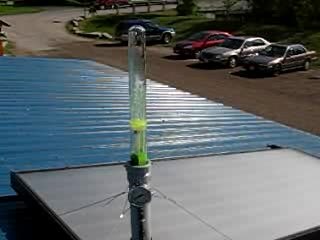 W
WGas lift or bubble pumps use the artificial lift technique of raising a fluid such as water or oil by introducing bubbles of compressed air, water vapor or other vaporous bubbles into the outlet tube. This has the effect of reducing the hydrostatic pressure in the outlet tube vs. the hydrostatic pressure at the inlet side of the tube.
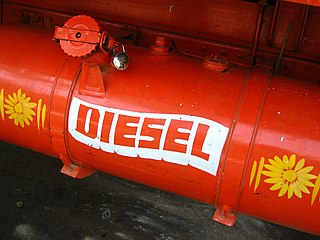 W
WDiesel fuel in general is any liquid fuel used in diesel engines, whose fuel ignition takes place, without any spark, as a result of compression of the inlet air mixture and then injection of fuel. Diesel engines have found broad use as a result of higher thermodynamic efficiency and thus fuel efficiency. This is particularly noted where diesel engines are run at part-load; as their air supply is not throttled as in a gasoline (petrol) engine, their efficiency still remains very high.
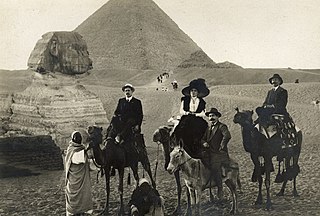 W
WThe International Drillers is the name given to the more than 500 drillers from Lambton County who worked in oil fields across the world between December 1873 to the mid-1940s. Many of the International Drillers grew up learning the oil business in Enniskillen County and provided the skilled labour, expertise and technology necessary for the development of the global petroleum industry.
 W
WISO 20815 is the International Organisation for Standardisation (ISO) standard for production assurance and reliability management in the petroleum, petrochemical and natural gas industries.
 W
WLiquefied natural gas (LNG) is natural gas (predominantly methane, CH4, with some mixture of ethane, C2H6) that has been cooled down to liquid form for ease and safety of non-pressurized storage or transport. It takes up about 1/600th the volume of natural gas in the gaseous state (at standard conditions for temperature and pressure). It is odorless, colorless, non-toxic and non-corrosive. Hazards include flammability after vaporization into a gaseous state, freezing and asphyxia. The liquefaction process involves removal of certain components, such as dust, acid gases, helium, water, and heavy hydrocarbons, which could cause difficulty downstream. The natural gas is then condensed into a liquid at close to atmospheric pressure by cooling it to approximately −162 °C (−260 °F); maximum transport pressure is set at around 25 kPa (4 psi).
 W
WLiquefied petroleum gas, is a flammable mixture of hydrocarbon gases used as fuel in heating appliances, cooking equipment, and vehicles.
 W
WA drilling riser is a conduit that provides a temporary extension of a subsea oil well to a surface drilling facility. Drilling risers are categorised into two types: marine drilling risers used with subsea blowout preventer (BOP) and generally used by floating drilling vessels; and tie-back drilling risers used with a surface BOP and generally deployed from fixed platforms or very stable floating platforms like a spar or tension leg platform (TLP).
 W
WA motorman is a person who operates a tram (streetcar), electrified tram (trolley) car, light rail, or rapid transit train.
 W
WThe mousehole is the storage area on a drilling rig where the next joint of drilling pipe is held until needed. This hole is in the floor of the rig, bored into the earth for a short way, and usually lined with a metal casing known as a scabbard.
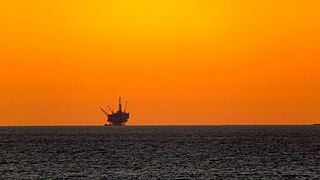 W
WOffshore drilling is a mechanical process where a wellbore is drilled below the seabed. It is typically carried out in order to explore for and subsequently extract petroleum which lies in rock formations beneath the seabed. Most commonly, the term is used to describe drilling activities on the continental shelf, though the term can also be applied to drilling in lakes, inshore waters and inland seas.
 W
WOffshore oil and gas in California provides a significant portion of the state's petroleum production. Offshore oil and gas has been a contentious issue for decades, first over the question of state versus federal ownership, but since 1969 mostly over questions of resource development versus environmental protection.
 W
WAn oil platform, offshore platform, or offshore drilling rig is a large structure with facilities for well drilling to explore, extract, store, and process petroleum and natural gas that lies in rock formations beneath the seabed. Many oil platforms will also contain facilities to accommodate their workforce. Most commonly, oil platforms engage in activities on the continental shelf, though they can also be used in lakes, inshore waters, and inland seas. Depending on the circumstances, the platform may be fixed to the ocean floor, consist of an artificial island, or float. Remote subsea wells may also be connected to a platform by flow lines and by umbilical connections. These sub-sea solutions may consist of one or more subsea wells or of one or more manifold centres for multiple wells.
 W
WAn oil terminal is an industrial facility for the storage of oil, petroleum and petrochemical products, and from which these products are transported to end users or other storage facilities. An oil terminal typically has a variety of above or below ground tankage; facilities for inter-tank transfer; pumping facilities; loading gantries for filling road tankers or barges; ship loading/unloading equipment at marine terminals; and pipeline connections.
 W
WOil well fires are oil or gas wells that have caught on fire and burn. Oil well fires can be the result of human actions, such as accidents or arson, or natural events, such as lightning. They can exist on a small scale, such as an oil field spill catching fire, or on a huge scale, as in geyser-like jets of flames from ignited high pressure wells. A frequent cause of a well fire is a high-pressure blowout during drilling operations.
 W
WORYX GTL is a synthetic fuel plant based in Ras Laffan Industrial City, Qatar, that is owned by Qatar Petroleum (51%) and Sasol (49%). It uses gas to liquids (GTL) technology for converting natural gas into liquid petroleum products. The capacity of Oryx GTL in 2007 was 34 thousand barrels per day of oil.
 W
WPerdido is the deepest floating oil platform in the world at a water depth of about 2450 meters operated by the Shell Oil Company in the Gulf of Mexico USA.
 W
WPetroleum refining processes are the chemical engineering processes and other facilities used in petroleum refineries to transform crude oil into useful products such as liquefied petroleum gas (LPG), gasoline or petrol, kerosene, jet fuel, diesel oil and fuel oils.
 W
WIn pipeline transportation, pigging is the practice of using pipeline inspection gauges, devices generally referred to as pigs or scrapers, to perform various maintenance operations. This is done without stopping the flow of the product in the pipeline.
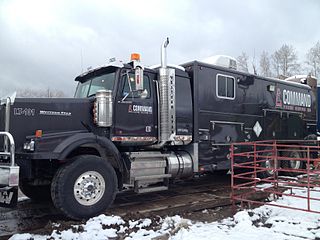 W
WPipe recovery is a specific wireline operation used in the oil and gas industry, when the drill string becomes stuck downhole. Stuck pipe prevents the drill rig from continuing operations. This results in costly downtime, ranging anywhere from $10,000-1,000,000 per day of downtime, therefore it is critical to resolve the problem as quickly as possible. Pipe recovery is the process by which the location of the stuck pipe is identified, and the free pipe is separated from the stuck pipe either by a backoff or a chemical cut. This allows fishing tools to subsequently be run down hole to latch onto and remove the stuck pipe.
 W
WA platform supply vessel (PSV) is a ship specially designed to supply offshore oil and gas platforms. These ships range from 50 to 100 meters in length and accomplish a variety of tasks. The primary function for most of these vessels is logistic support and transportation of goods, tools, equipment and personnel to and from offshore oil platforms and other offshore structures. In recent years, a new generation of platform supply vessels entered the market, usually equipped with Class 1 or Class 2 dynamic positioning system.
 W
WProduced water is a term used in the oil industry to describe water that is produced as a byproduct during the extraction of oil and natural gas. Produced water is a kind of brackish and saline waters from under ground formation that are brought to the surface. Oil and gas reservoirs often have water as well as hydrocarbons, sometimes in a zone that lies under the hydrocarbons, and sometimes in the same zone with the oil and gas.
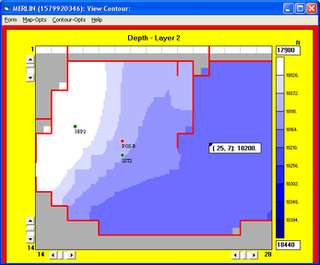 W
WReservoir simulation is an area of reservoir engineering in which computer models are used to predict the flow of fluids through porous media.
 W
WRoughneck is a term for a person whose occupation is hard manual labor. The term applies across a number of industries, but is most commonly associated with the workers on a drilling rig. The ideal of the hard-working, tough roughneck has been adopted by several sports teams who use the phrase as part of their name or logo.
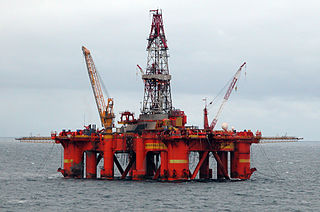 W
WA semi-submersible platform is a specialised marine vessel used in offshore roles including as offshore drilling rigs, safety vessels, oil production platforms, and heavy lift cranes. They have good ship stability and seakeeping, better than drillships.
 W
WShale oil extraction is an industrial process for unconventional oil production. This process converts kerogen in oil shale into shale oil by pyrolysis, hydrogenation, or thermal dissolution. The resultant shale oil is used as fuel oil or upgraded to meet refinery feedstock specifications by adding hydrogen and removing sulfur and nitrogen impurities.
 W
WSee snubber for a device used to suppress ("snub") voltage transients in electrical systems
A stripper well or marginal well is an oil or gas well that is nearing the end of its economically useful life. In the United States a "stripper" gas well is defined by the Interstate Oil and Gas Compact Commission as one that produces 60,000 cubic feet (1,700 m3) or less of gas per day at its maximum flow rate; the Internal Revenue Service, for tax purposes, uses a threshold of 90,000 cubic feet (2,500 m3) per day. Oil wells are generally classified as stripper wells when they produce 10-15 barrels per day or less for any twelve-month period.
 W
WA tension-leg platform (TLP) or extended tension leg platform (ETLP') is a vertically moored floating structure normally used for the offshore production of oil or gas, and is particularly suited for water depths greater than 300 metres and less than 1500 metres. Use of tension-leg platforms has also been proposed for wind turbines.
 W
WOn the top-side facilities of offshore oil and gas platforms, the Master Control Station (MCS) is a dedicated system that controls and retrieves data from subsea equipment on the ocean floor. The MCS is supplied by the manufacturers of the subsea control modules (SCM), an MCS is required for each vendor. This can be a challenge in some scenarios.
 W
WA well intervention, or well work, is any operation carried out on an oil or gas well during, or at the end of, its productive life that alters the state of the well or well geometry, provides well diagnostics, or manages the production of the well.
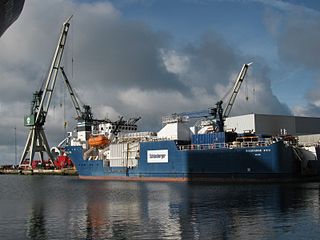 W
WWell stimulation is a well intervention performed on an oil or gas well to increase production by improving the flow of hydrocarbons from the reservoir into the well bore. It may be done using a well stimulator structure or using off shore ships / drilling vessels, also known as "Well stimulation vessels".
 W
WA wellhead is the component at the surface of an oil or gas well that provides the structural and pressure-containing interface for the drilling and production equipment.
 W
WIn the oil and gas industry, the term wireline usually refers to the use of multi-conductor, single conductor or slickline cable, or "wireline", as a conveyance for the acquisition of subsurface petrophysical and geophysical data and the delivery of well construction services such as pipe recovery, perforating, plug setting and well cleaning and fishing. The subsurface geophysical and petrophysical information results in the description and analysis of subsurface geology, reservoir properties and production characteristics.
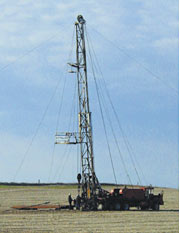 W
WThe term workover is used to refer to any kind of oil well intervention involving invasive techniques, such as wireline, coiled tubing or snubbing. More specifically, a workover refers to the expensive process of pulling and replacing completion or production hardware in order to extend the life of the well.